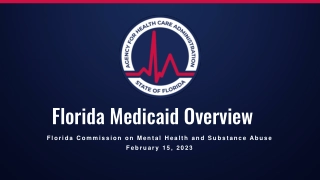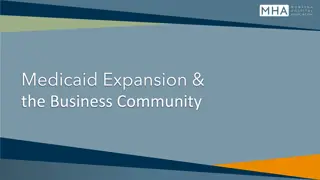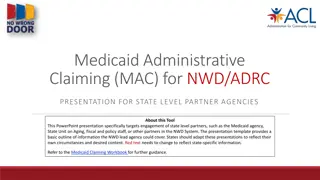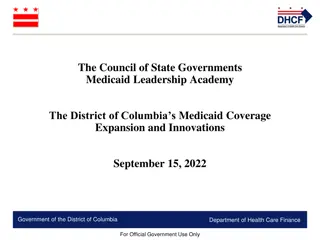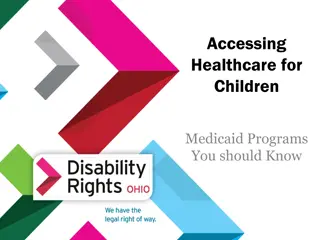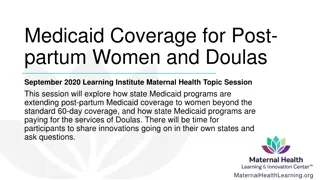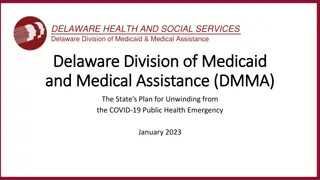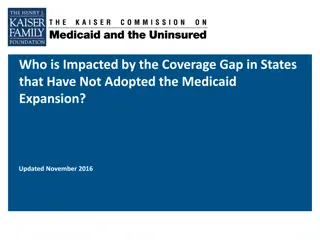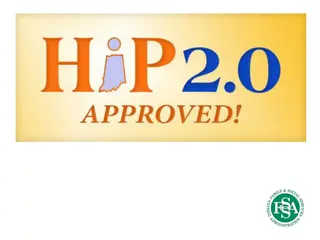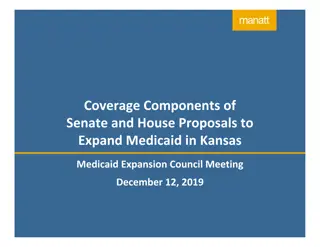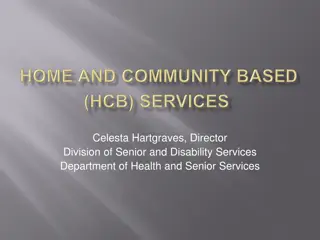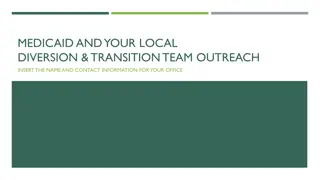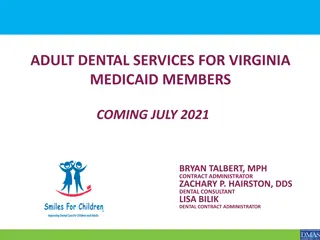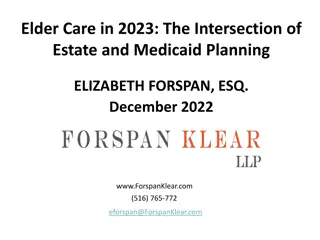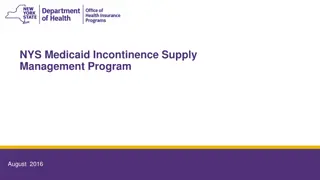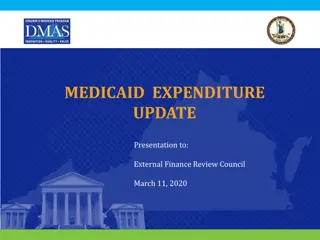
Promoting Medicaid Coverage for National DPP
"Discover the necessity of expanding Medicaid coverage for the National Diabetes Prevention Program (DPP) through data-driven insights. Learn the impact of National DPP on health outcomes, cost-effectiveness, and health equity."
Download Presentation

Please find below an Image/Link to download the presentation.
The content on the website is provided AS IS for your information and personal use only. It may not be sold, licensed, or shared on other websites without obtaining consent from the author. If you encounter any issues during the download, it is possible that the publisher has removed the file from their server.
You are allowed to download the files provided on this website for personal or commercial use, subject to the condition that they are used lawfully. All files are the property of their respective owners.
The content on the website is provided AS IS for your information and personal use only. It may not be sold, licensed, or shared on other websites without obtaining consent from the author.
E N D
Presentation Transcript
Promoting Medicaid Coverage of the National Diabetes Prevention Program
Set the Stage (2-3 Slides) Present the need for the National DPP (should take more than one slide). What problem(s) will it help to solve? Know your audience, focus on what matters most to them (cost, health outcomes, health equity, program delivery, etc.) Use data driven information (up-to-date, credible, include state/local)
Set the Stage: Use Statistics and Graphics Estimates of diabetes and prediabetes prevalence (current and anticipated growth) Morbidity and mortality rates Costs for people with diabetes (prescriptions, doctor/hospital visits, nursing home stays, etc.) Economic costs: lower productivity, absenteeism, lost wages, etc.
What is the National DPP and Why is it Important? Evidence-based, adapted from NIH clinical trial National effort, quality assurance through CDC s Recognition Program Year-long, group-based program: Minimum of 16 weekly sessions during the first six months and at least six monthly sessions during the second six months. Benefits: health outcomes, cost effective, peer-to- peer support, facilitated by trained lifestyle coaches (health professionals or non-licensed personnel) in community and virtual settings Sustainable: increasingly covered by public and private payers
Helpful Resources CDC s National Diabetes Prevention Program: https://www.cdc.gov/diabetes/prevention/index.html United States Diabetes Data Surveillance System: https://www.cdc.gov/diabetes/data/ Institute for Clinical and Economic Review (ICER) report for the National DPP: https://icer-review.org/wp- content/uploads/2016/07/CTAF_DPP_Final_Evidence_R eport_072516.pdf Cost/ROI estimates: CDC Diabetes Prevention Impact Toolkit: https://nccd.cdc.gov/toolkit/diabetesimpact American Medical Association ROI Calculator: https://ama-roi- calculator.appspot.com
State/Local Participation CDC recognized organizations offering the program (community and virtual): https://nccd.cdc.gov/DDT_DPRP/Registry.aspx Payers (insurers, employers) covering the program: https://www.coveragetoolkit.org
Does the National DPP support other services or initiatives? Screening Hypertension Healthy coping Healthier communities PCP incentive measures Other?
Next Steps What are next steps? How can organizations/agencies support coverage of the program within your state? What other resources are available? Whom should people contact for further questions, follow up?
Questions? Your contact information https://www.coveragetoolkit.org

